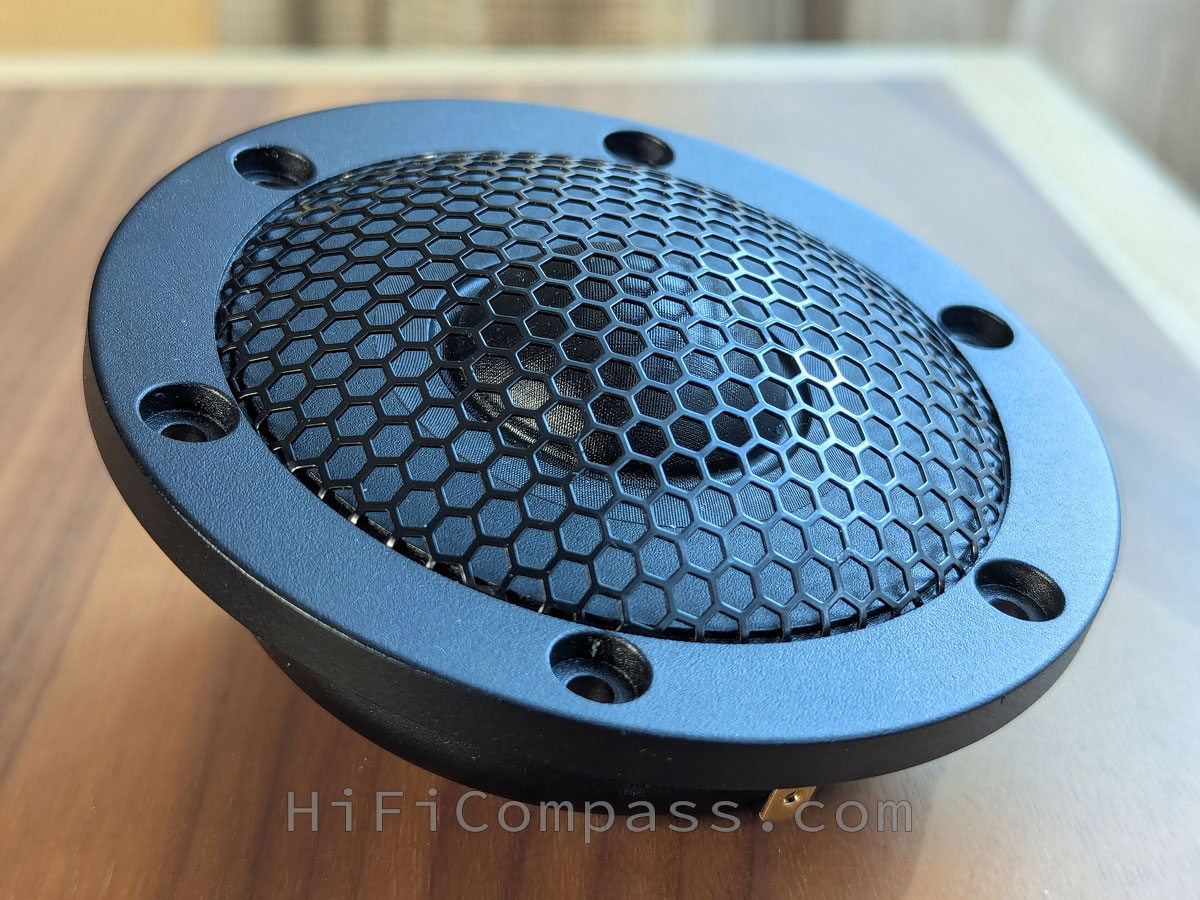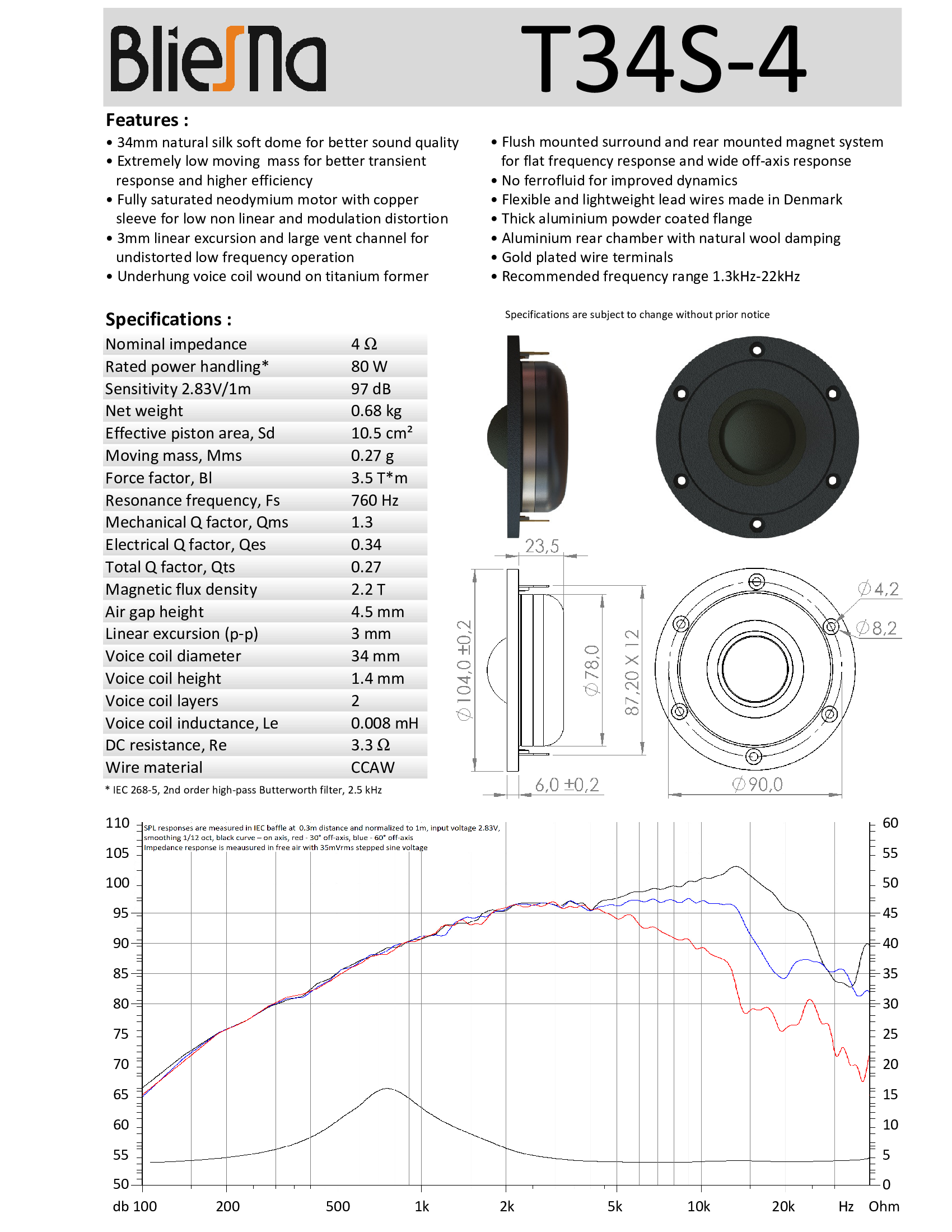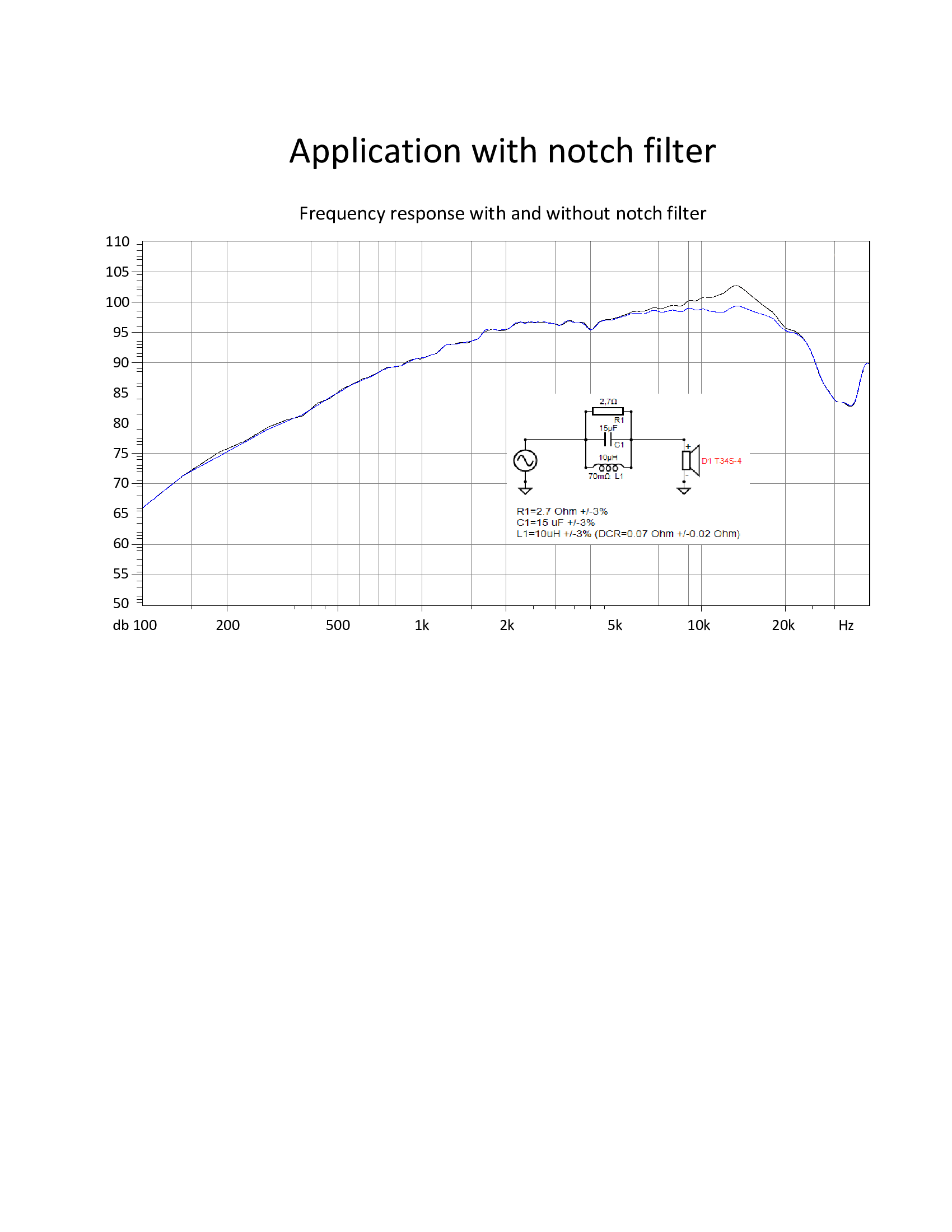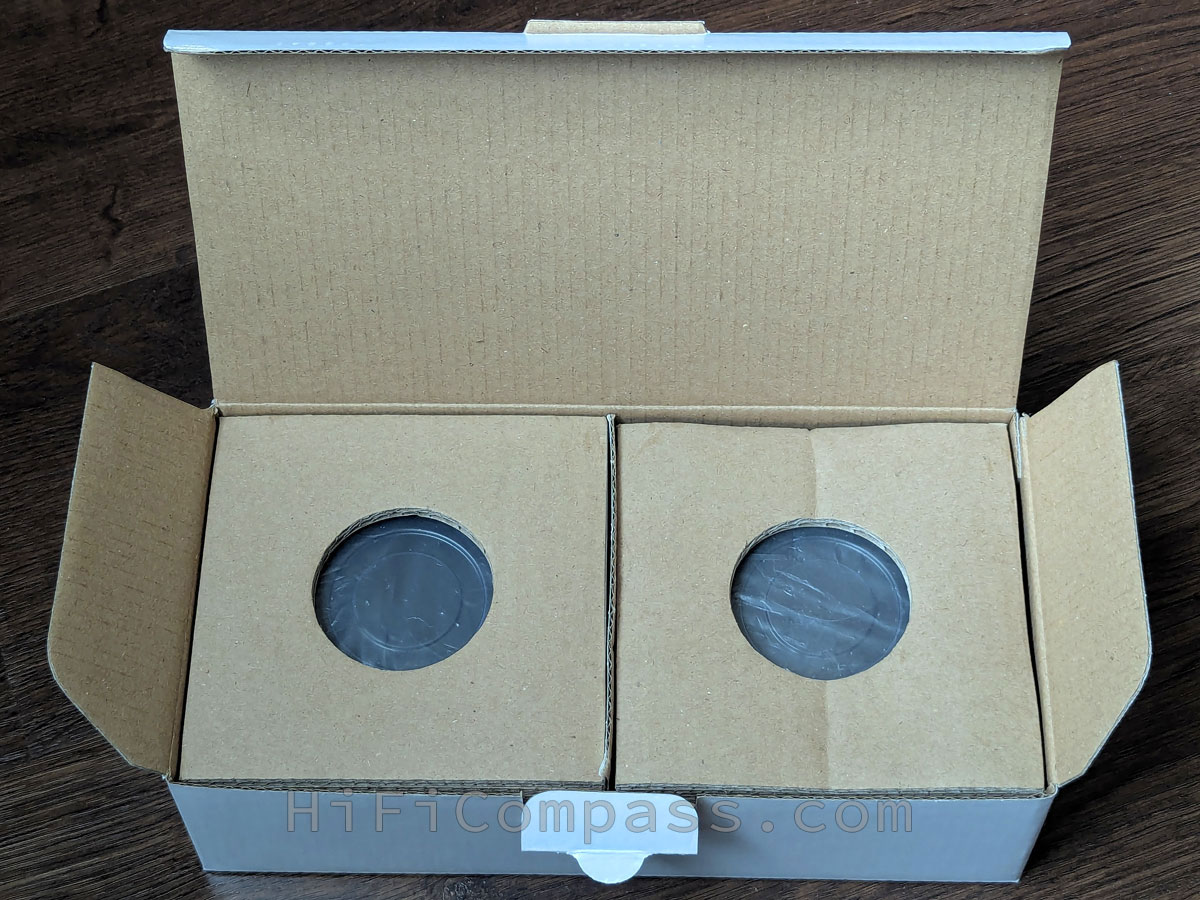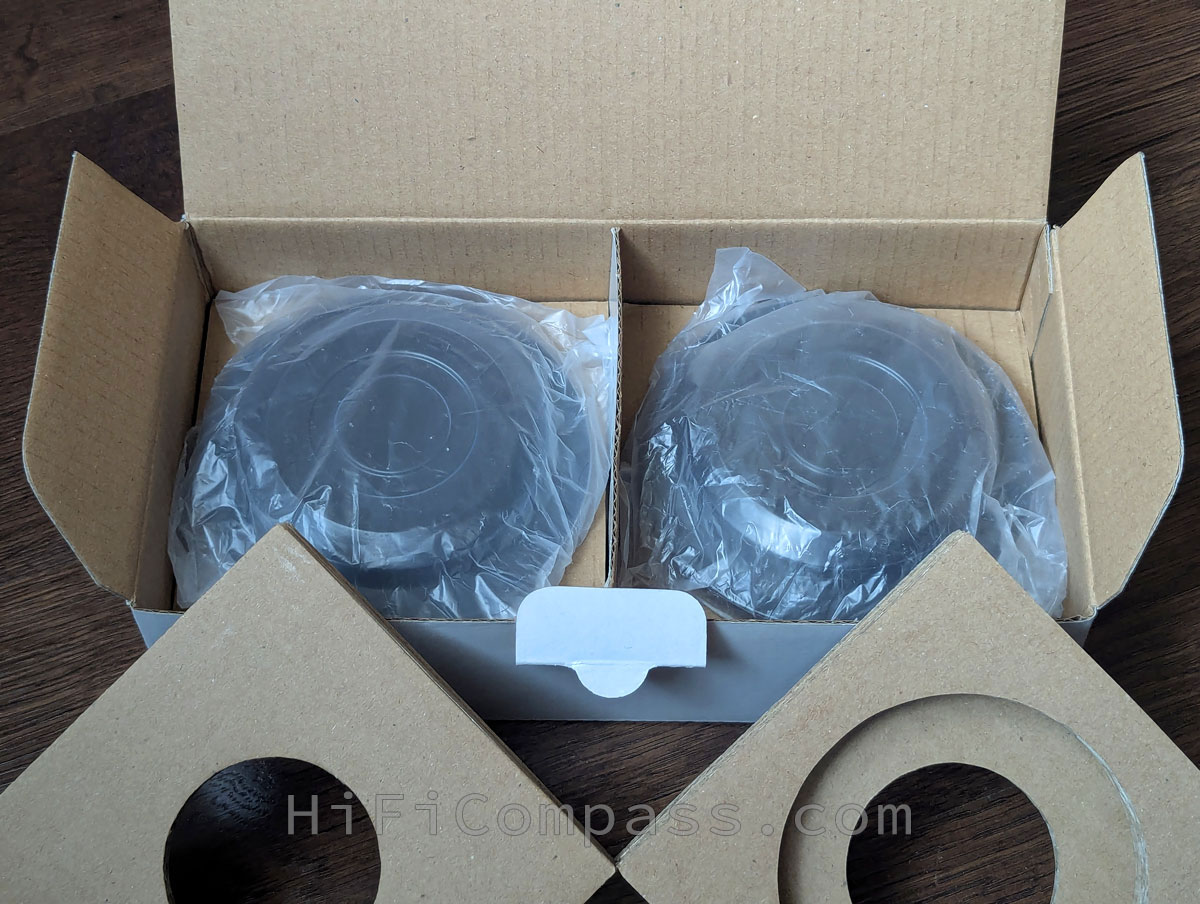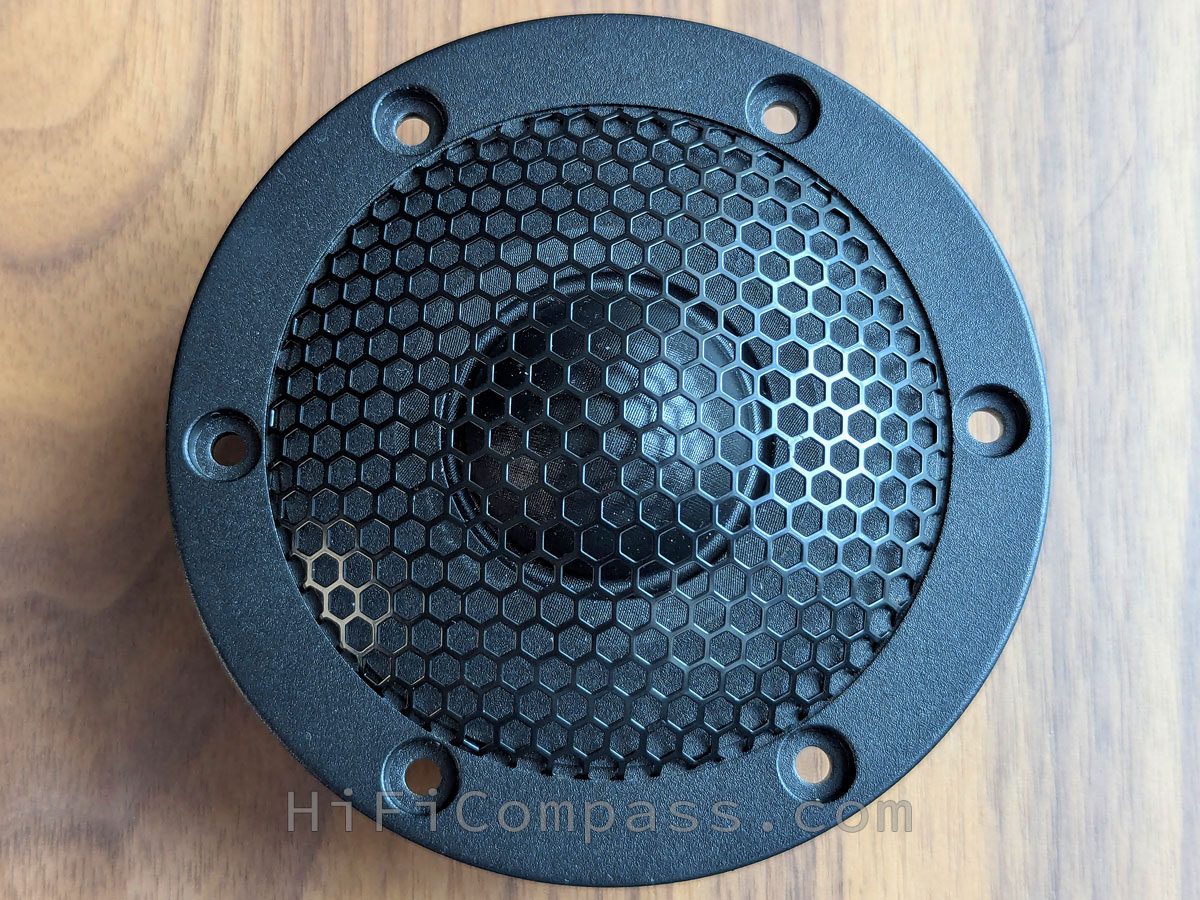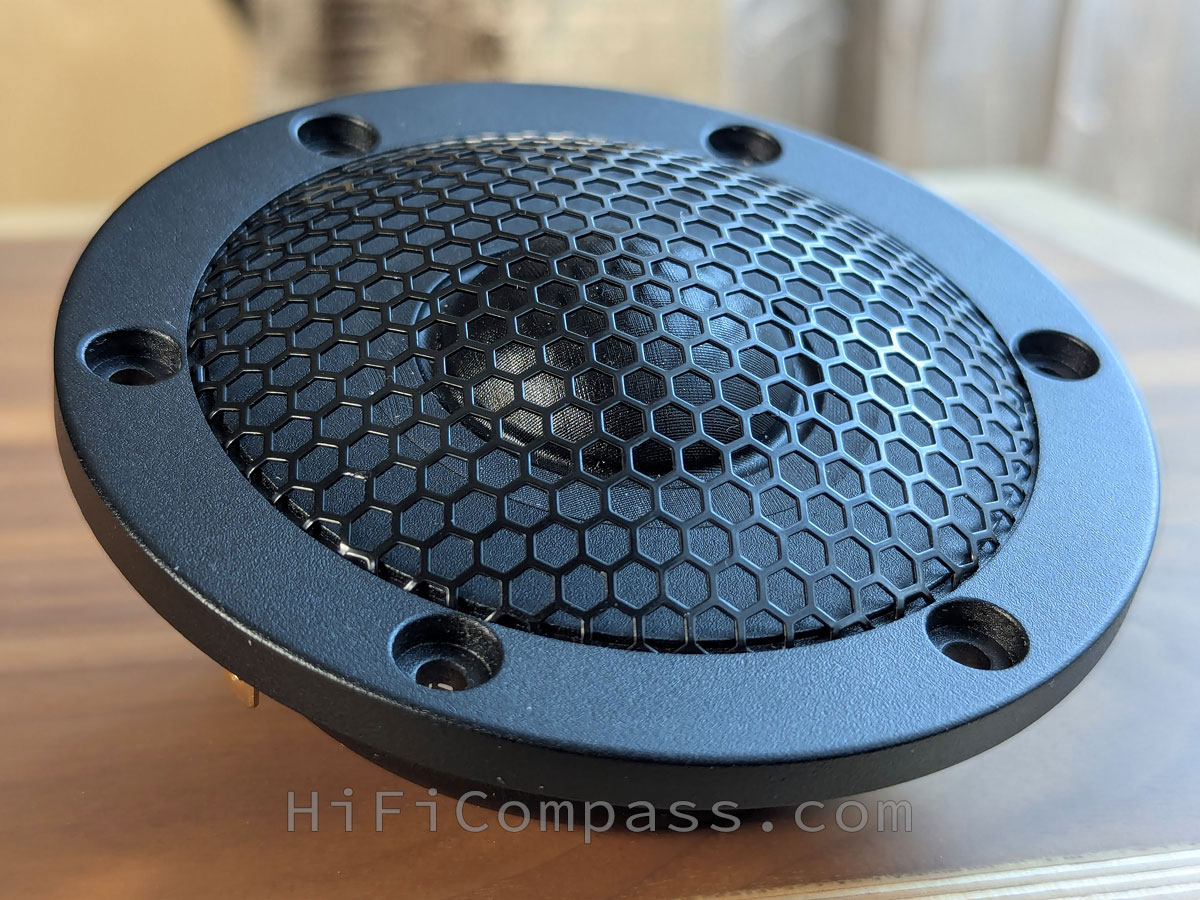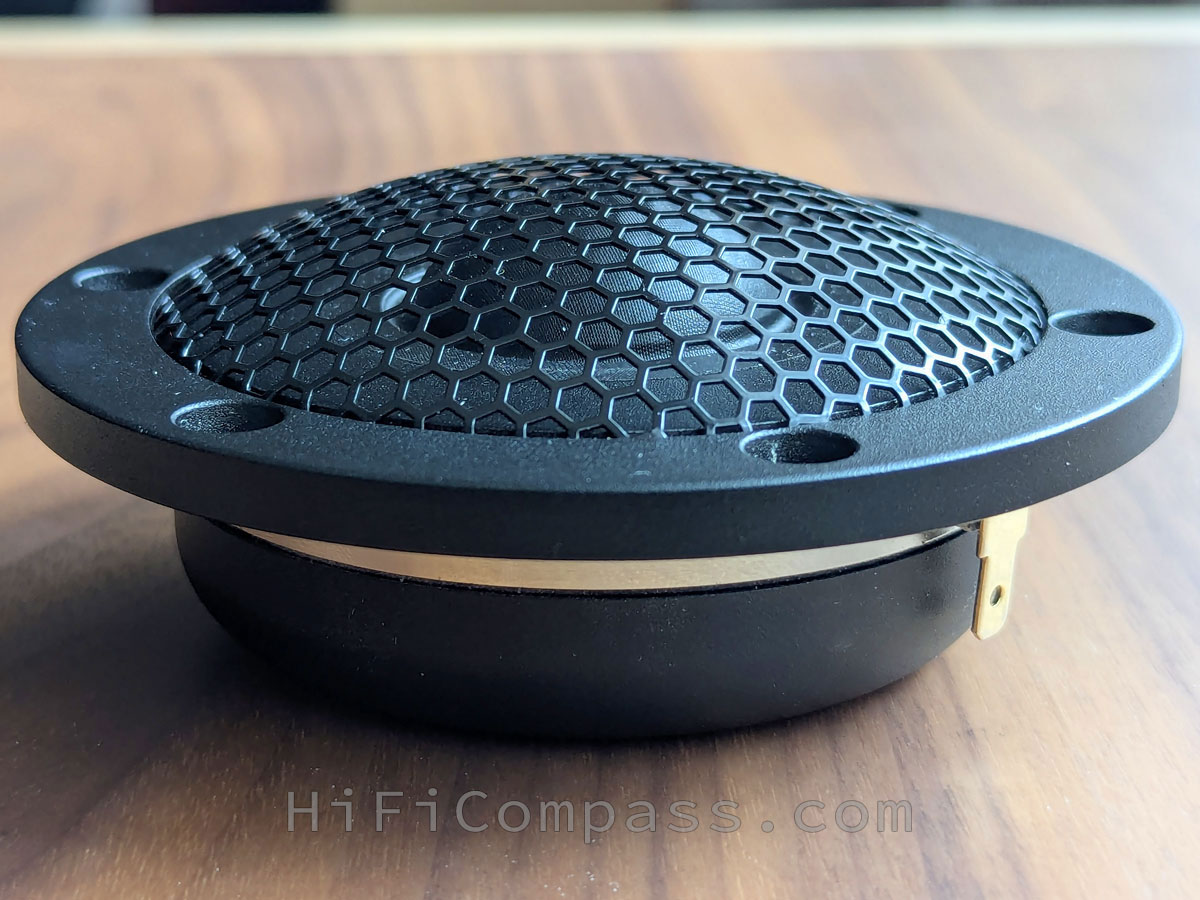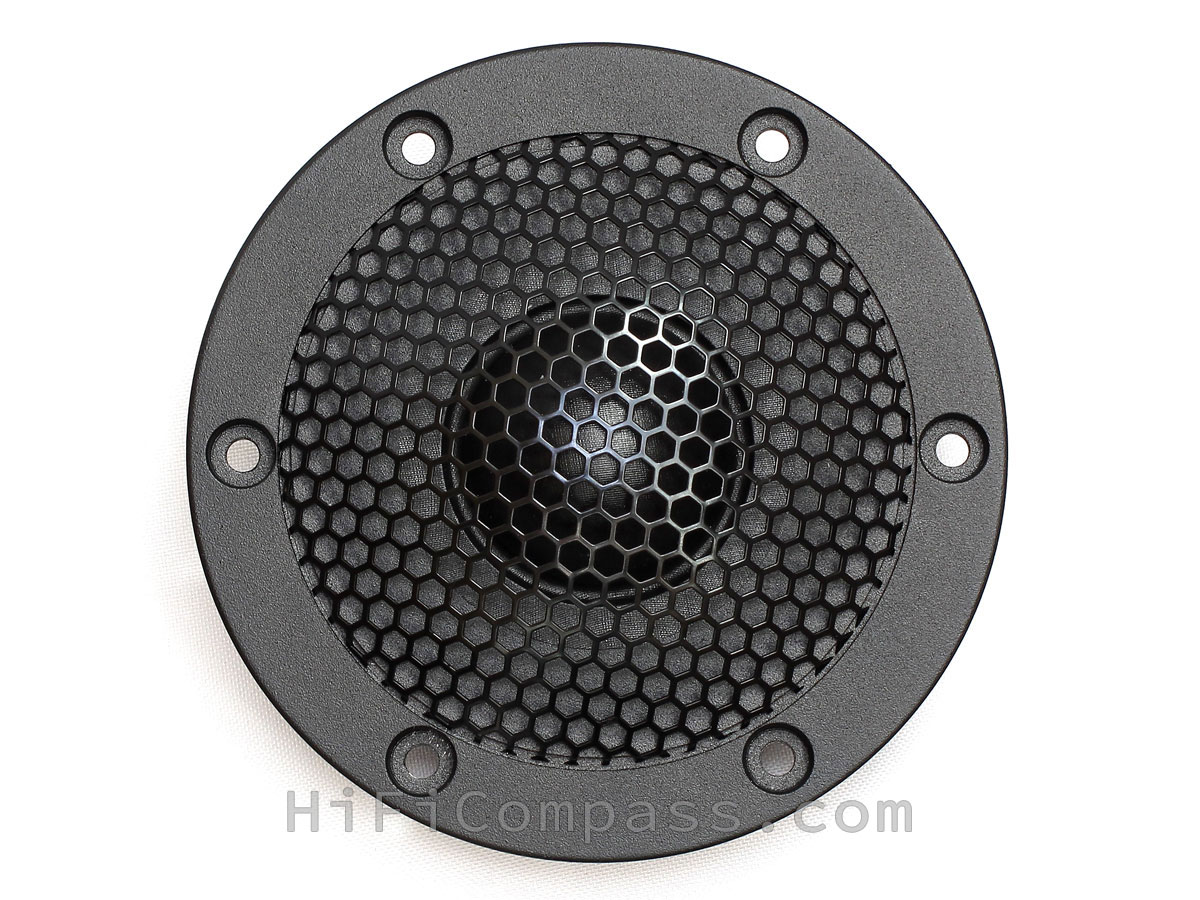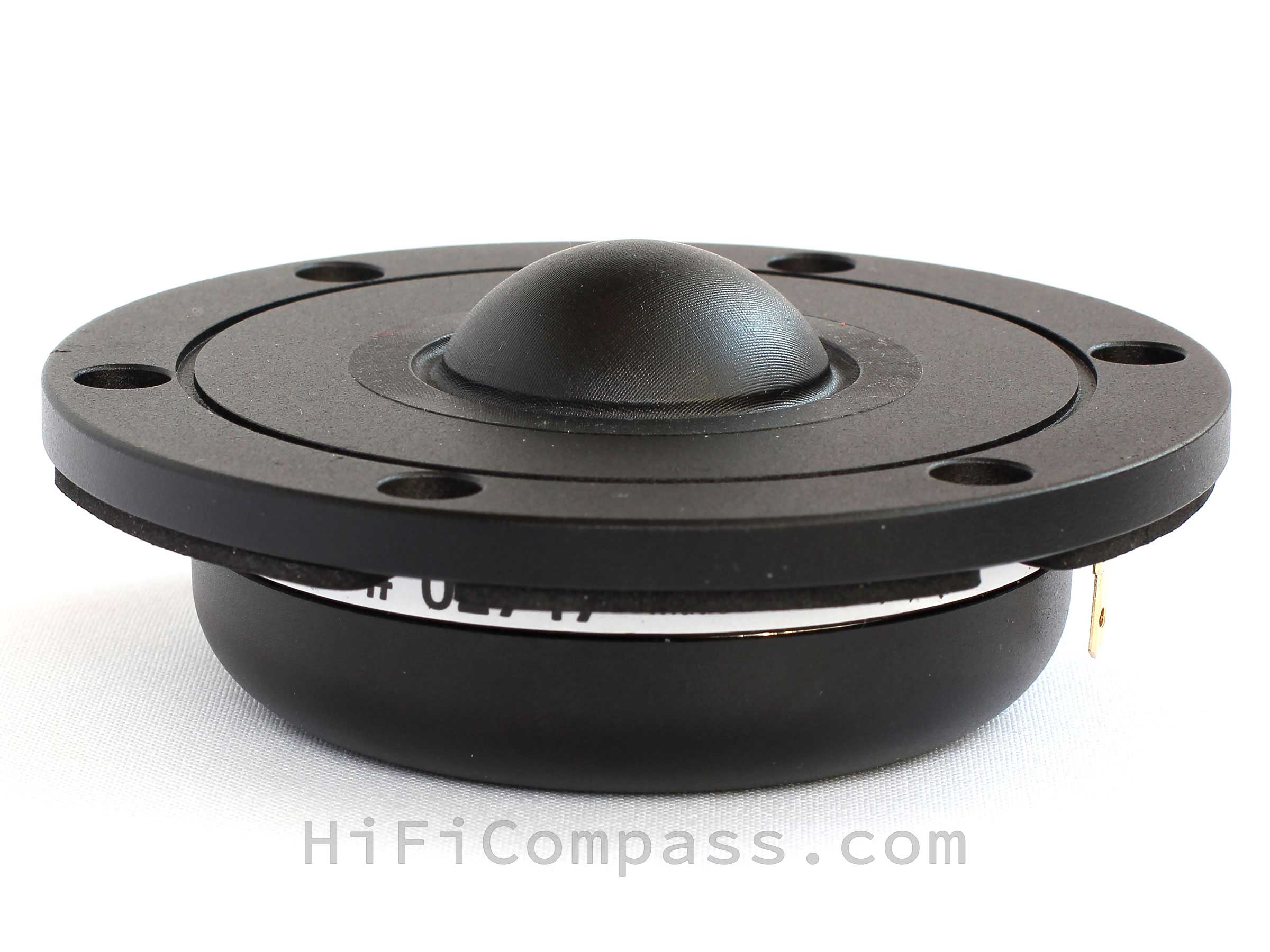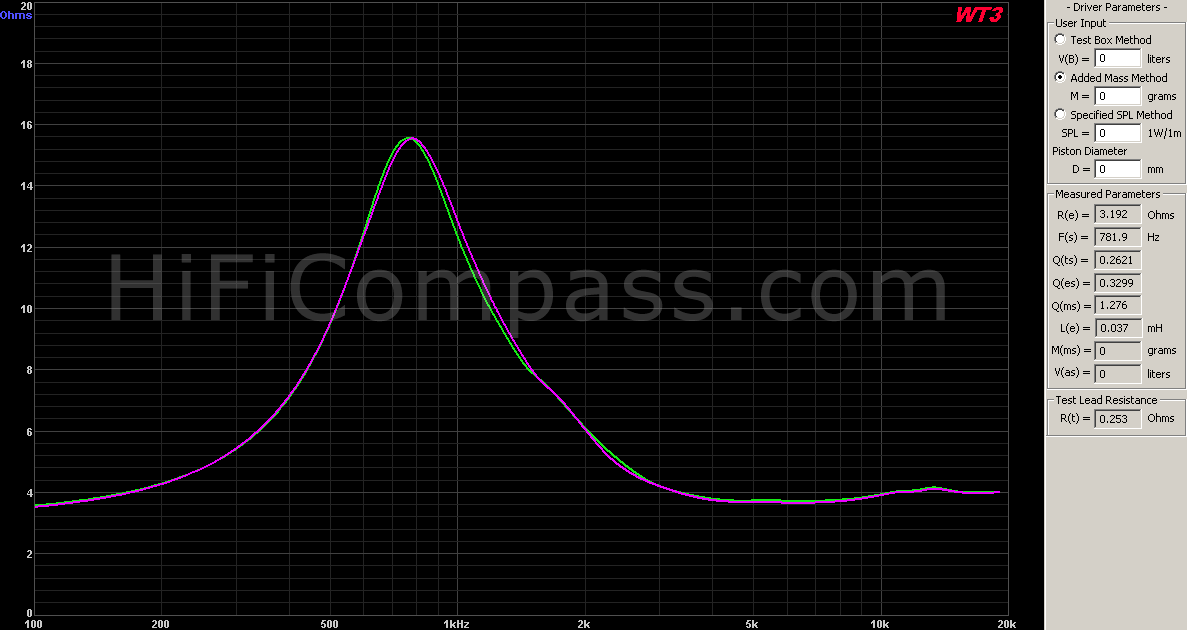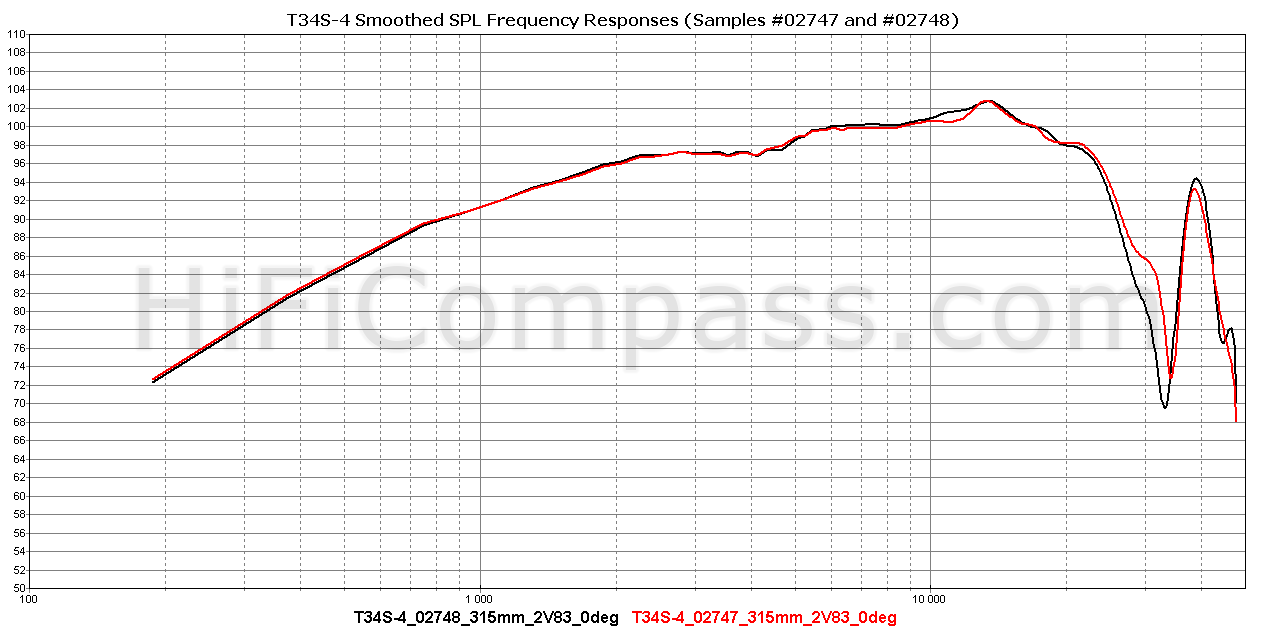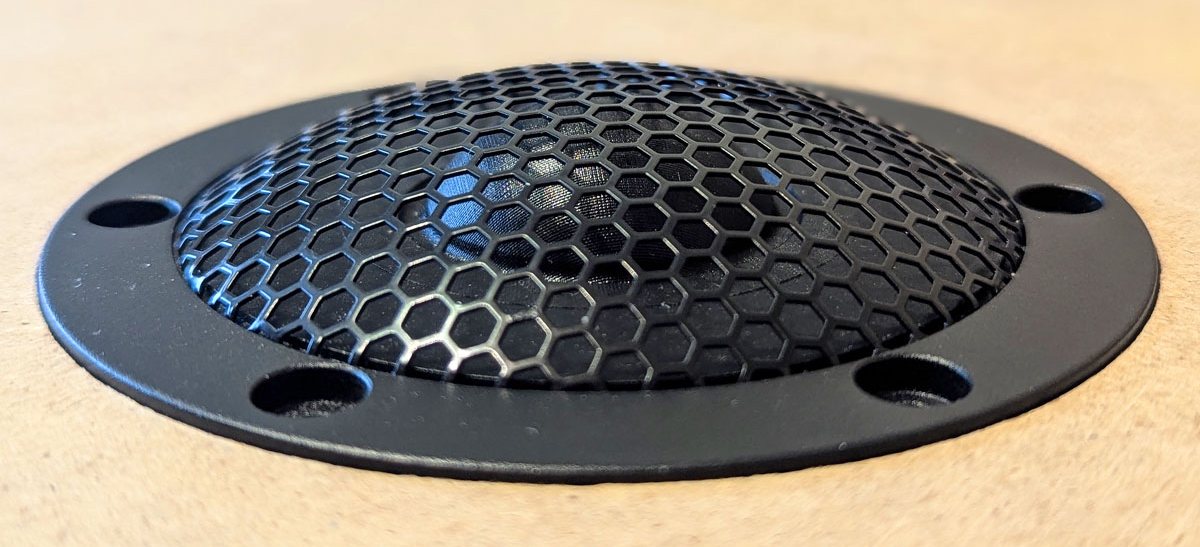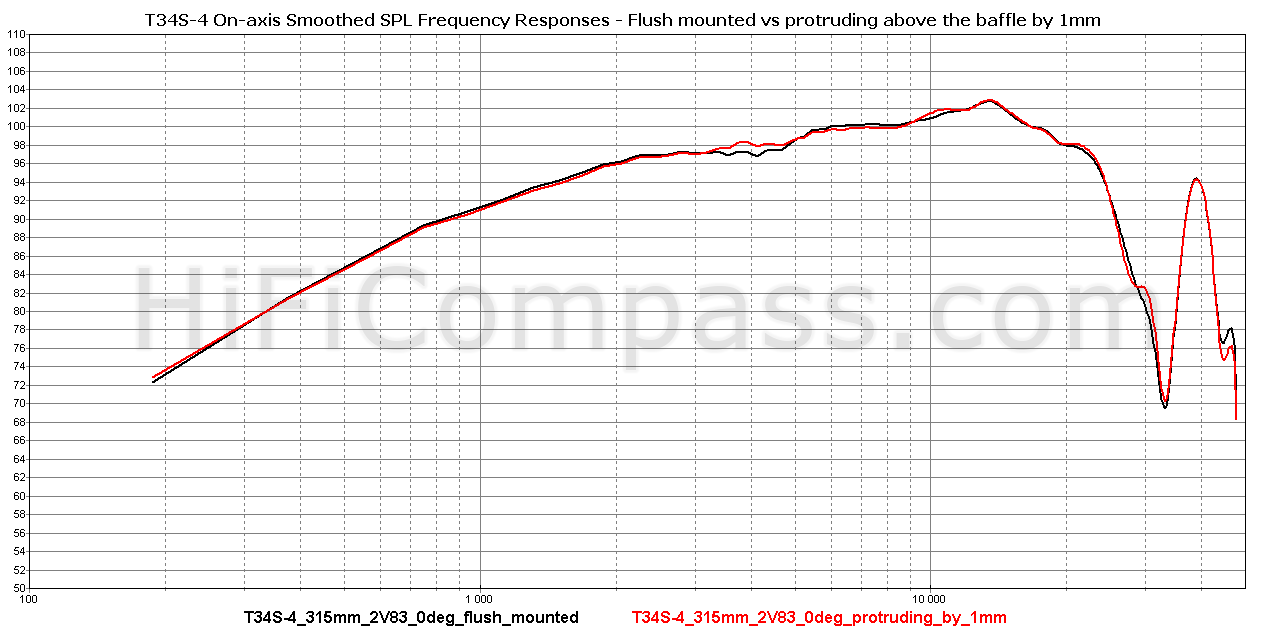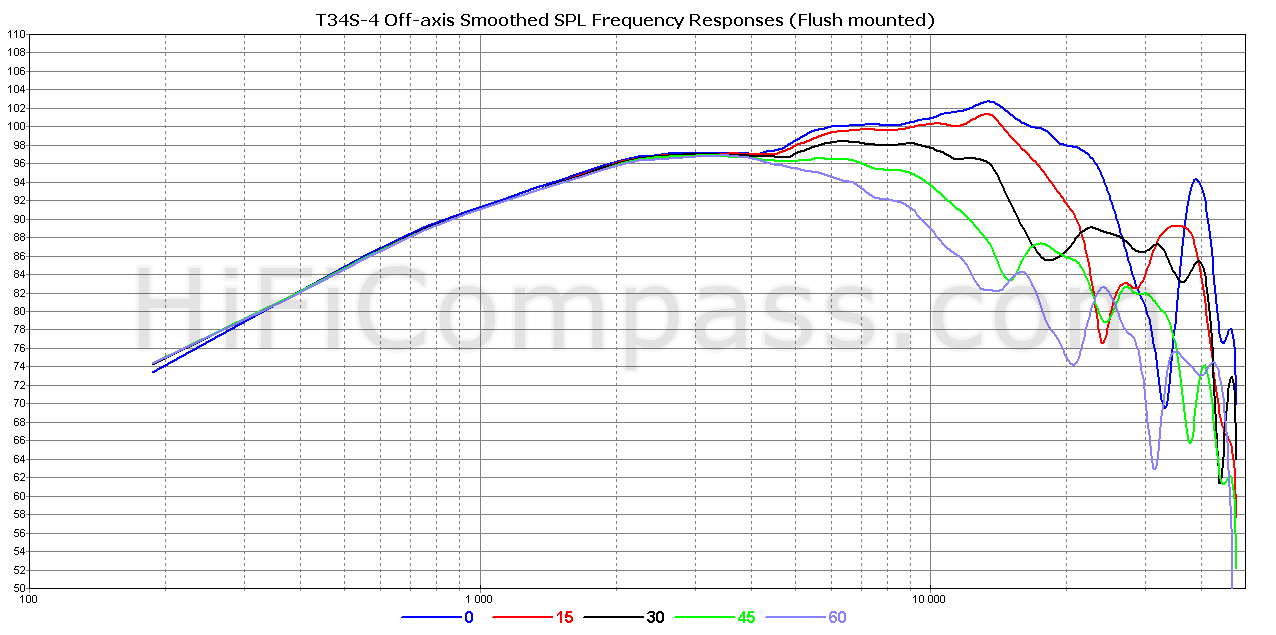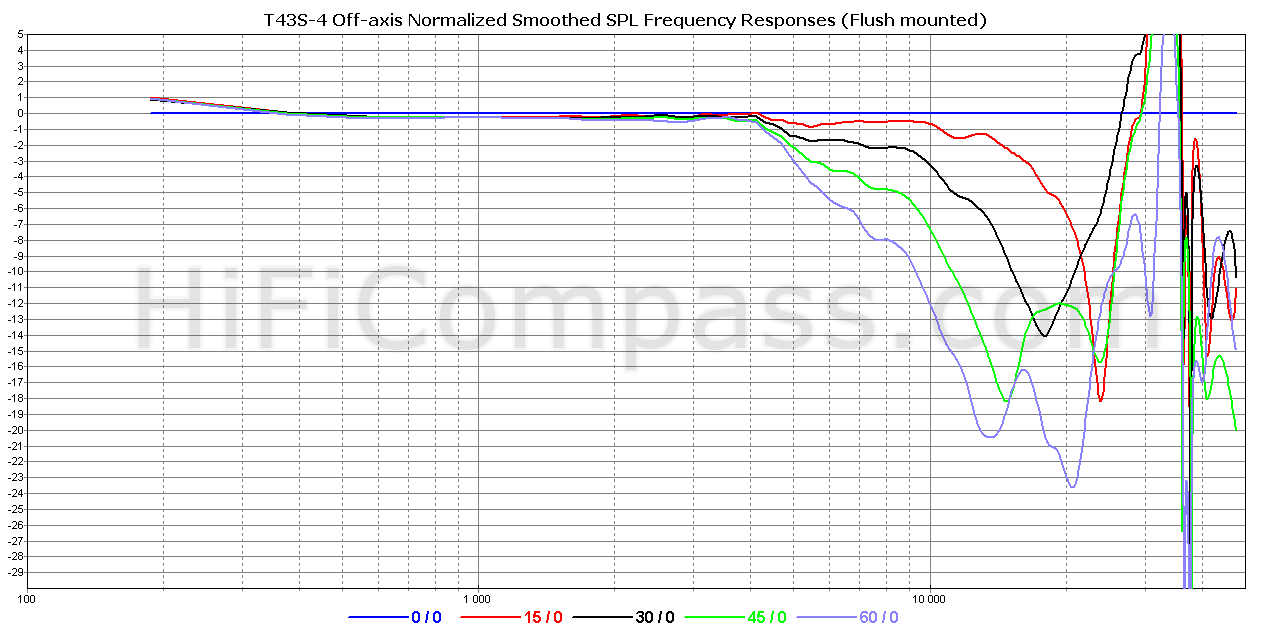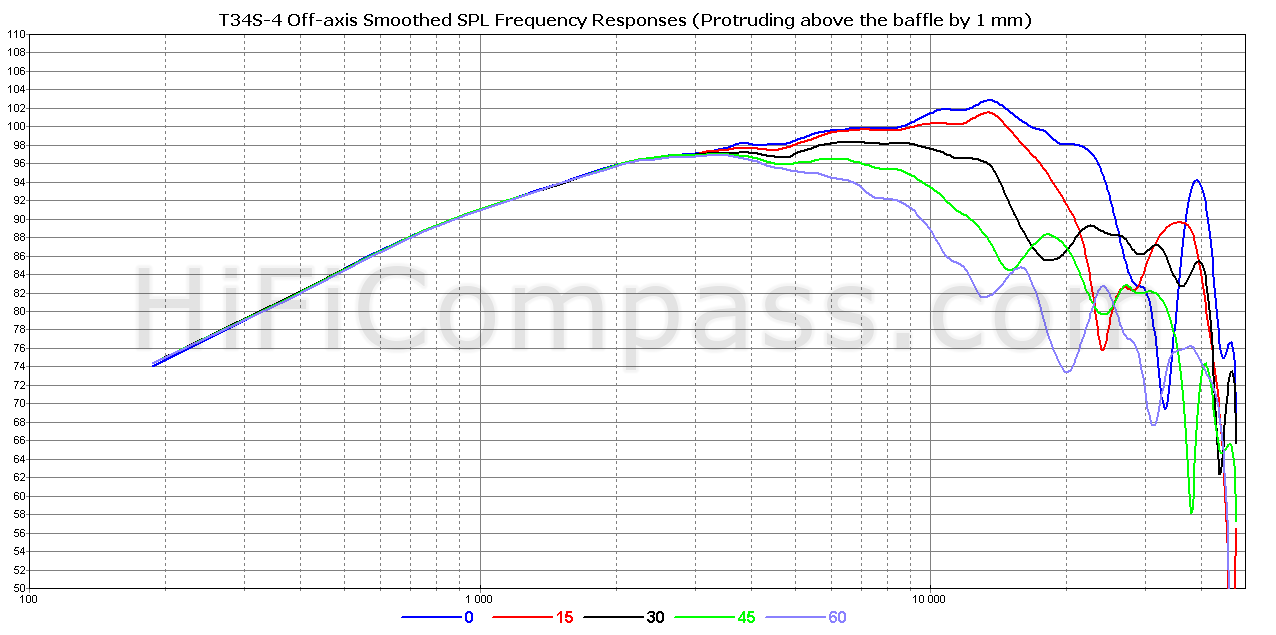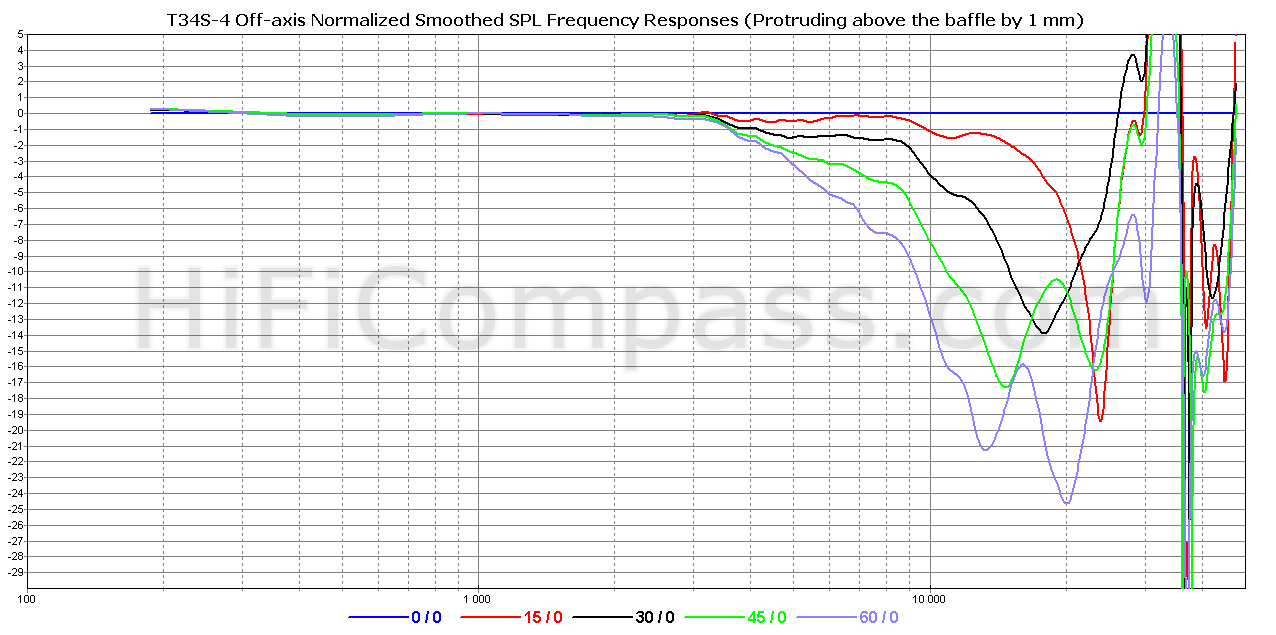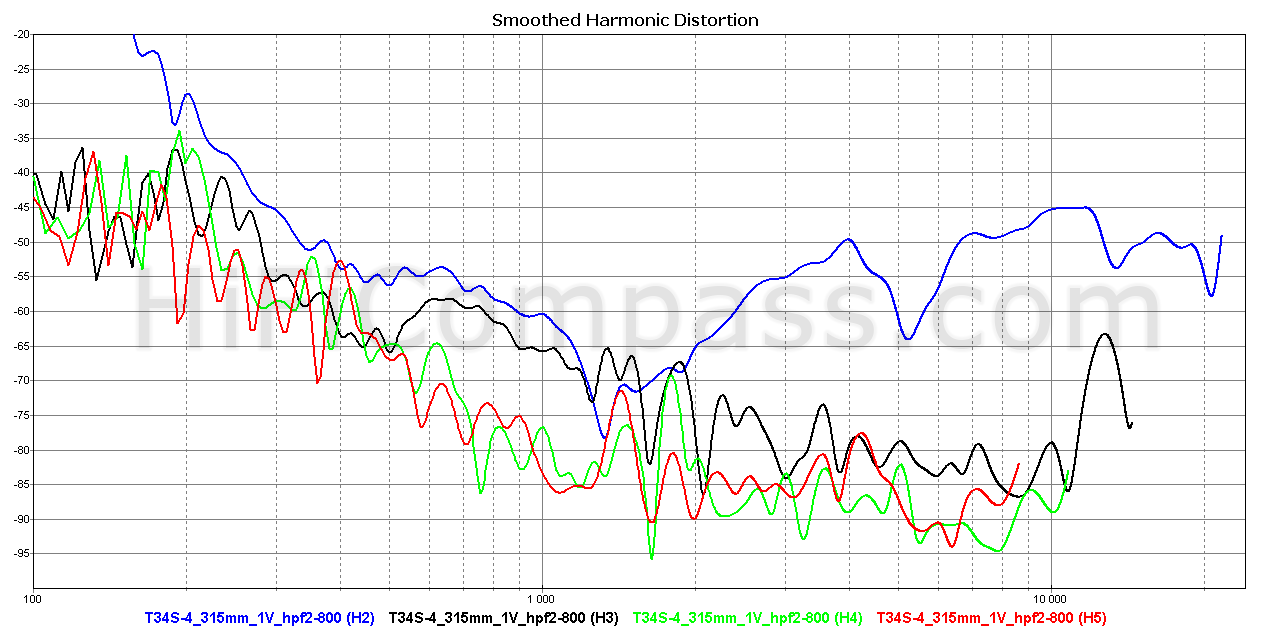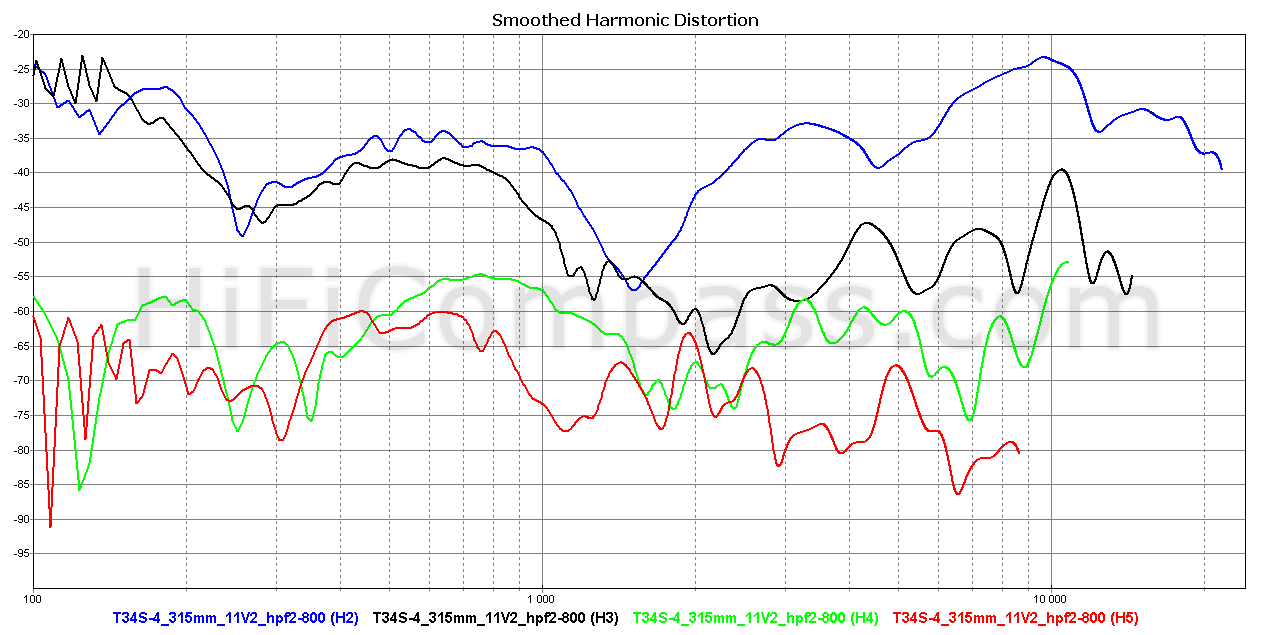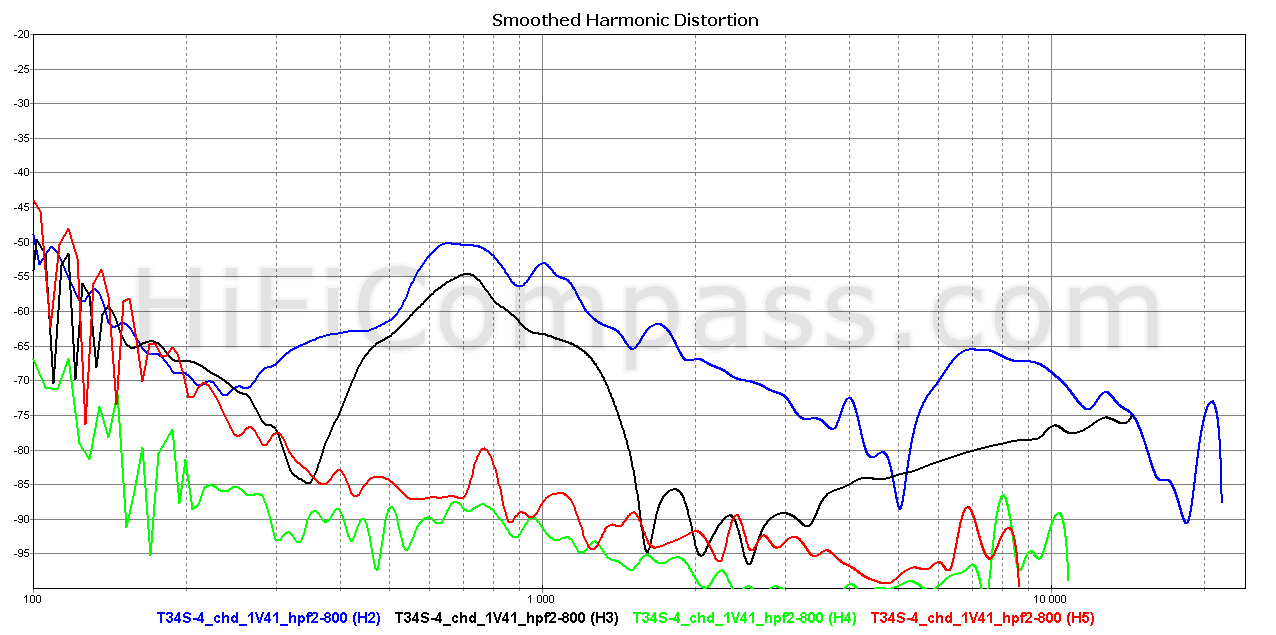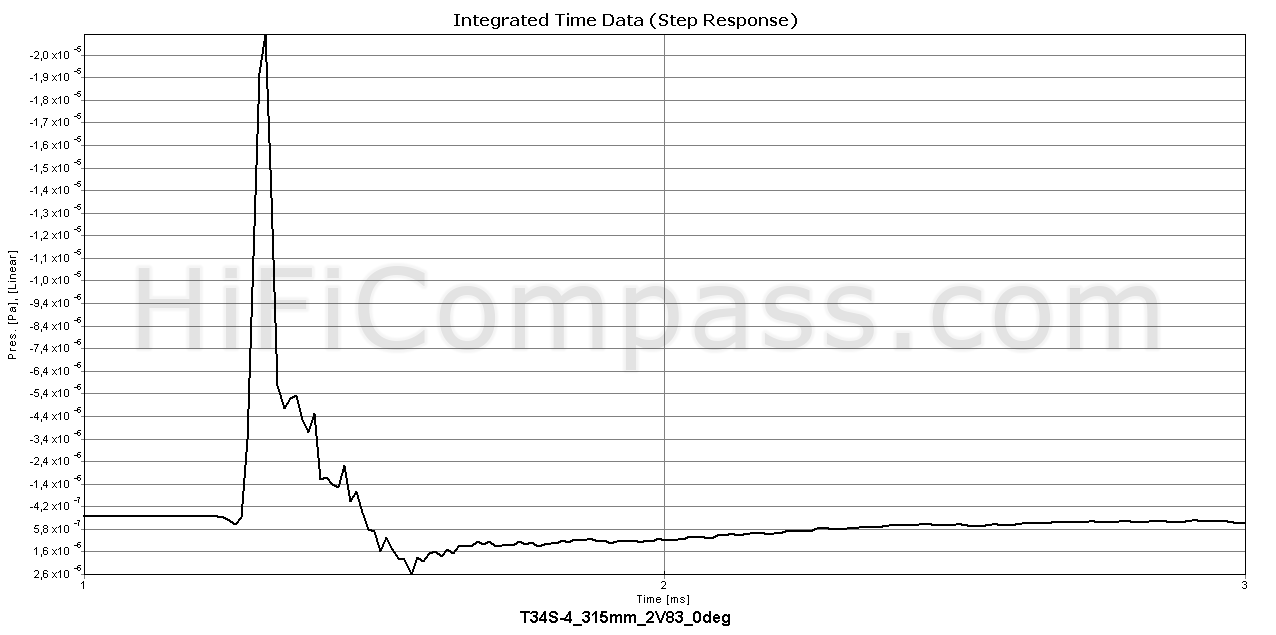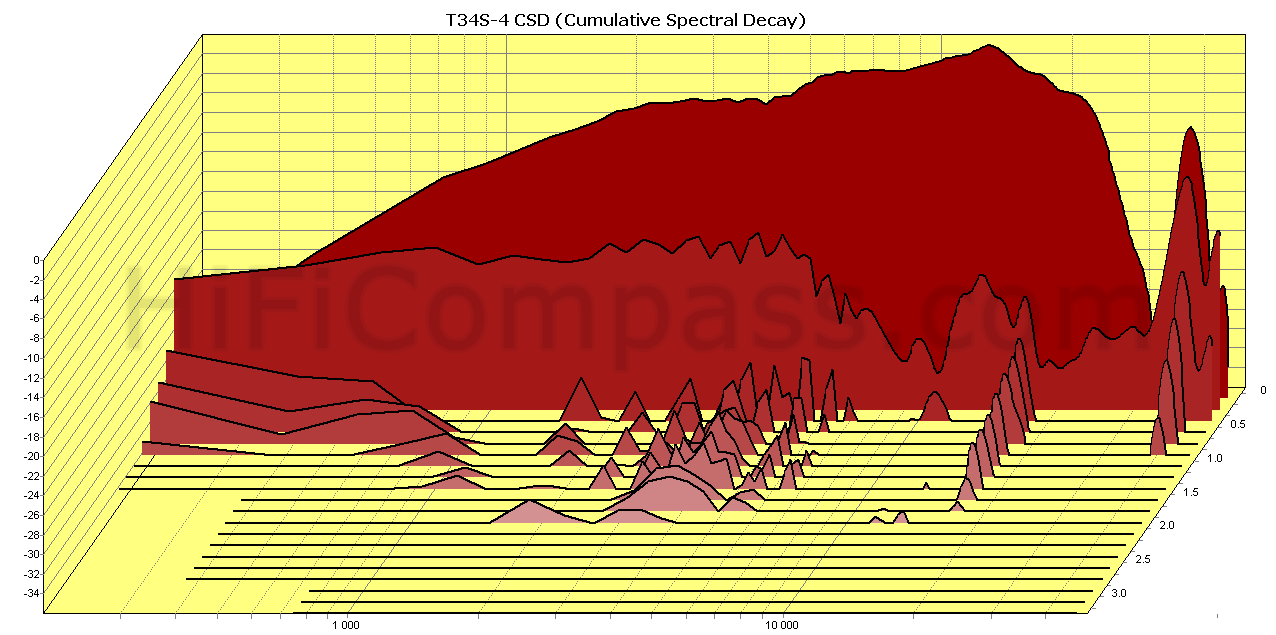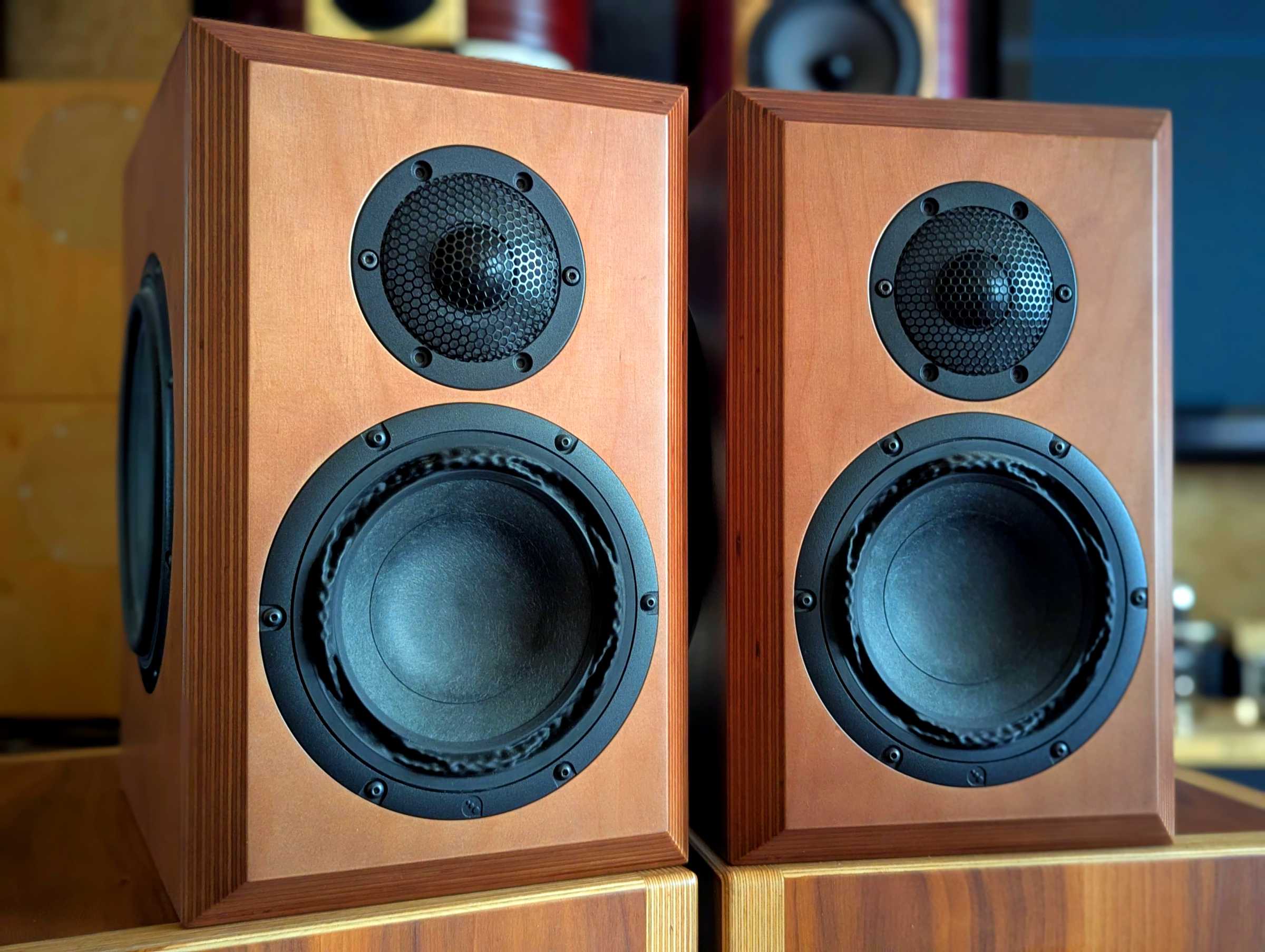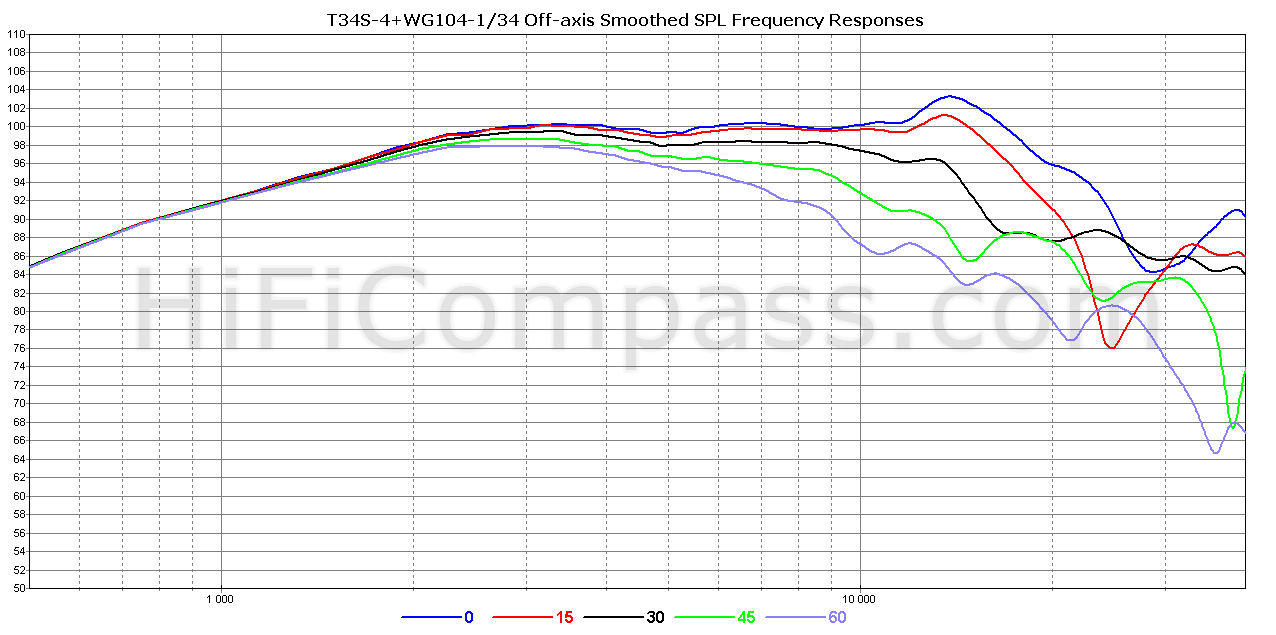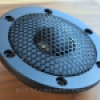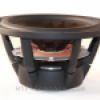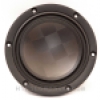HiFiCompass
BlieSMa T34S-4 34mm silk dome tweeter review
Today I'm testing the fifth incarnation of the largest tweeter from the German company BlieSMa - the freshly baked T34S-4 with a 34-mm silk dome diaphragm. BlieSMa consistently introduces new diaphragm materials into its products and today's review subject is quite logical, since it was the missing long-awaited "fifth element" among the T34 tweeters. The line of "small" tweeters has long adopted 25-mm diaphragms made of the most popular materials - aluminum, beryllium, silk and diamond, while the line of "large" tweeters, which even saw the light of day earlier, had the same materials in its assortment, and even exotic paper, the only thing missing was the ubiquitous silk. Parity has finally been restored (the experimental paper dome concept tweeter T34P-4 does not count)!
The new T34S-4 is built on the same chassis as the previous ones, so as you can already guess from my previous reviews of the T34A-4, T34B-4, T34D-4 and T34P-4 tweeters, we're talking about a tweeter with unique characteristics, namely an ultra-light (as for dome tweeters) moving system, an ultra-powerful motor with a magnetic gap induction of as much as 2.2 Tesla and a gigantic linear stroke of 3 mm peak to peak.
I like companies like BlieSMa and many others that provide the consumer with a wide range of flavors and tastes sonic signatures of their products, allowing for more precise customization of the sound of loudspeakers based on them and potentially satisfying the taste preferences of a much wider range of music lovers.
I would like to express my great gratitude to Stanislav Malikov, the developer and owner of BlieSMa, for providing me with tweeter samples for testing.
Here you can get familiar with the BlieSMa history.
What did the manufacturer state?
A laconic datasheet containing all the data necessary for the designer and even an appendix with a recommended notch-filter for linearizing the frequency response in the upper octave.
Of the parameters, it is especially worth noting the highest magnetic induction in the magnetic gap - 2.2 Tesla, very low inductance - 0.008 mH and very low moving mass - only 0.27 grams, which is simply impressive for such a large membrane. For comparison - the moving mass of aluminum T34A-4 is 0.28 grams, and beryllium T34B-4 - 0.26 grams. Very cool!
Although the tweeter is shown without a grille in the datasheet, it actually comes with the grille unglued. It is not necessary to glue it on, as the magnetic field of the motor is so strong that it stays on very well. So, the grille is removable and this added convenience allows you to experiment with custom waveguides.
The tweeters come in a matched pair.
- The packaging is a sturdy package made of durable glossy corrugated cardboard. The tweeters are secured inside by cardboard inserts with shaped cutouts
- The quality of workmanship is top-notch. No traces of glue, scratches, dirt and dust, stains and dents on the diaphragm, chips, gaps and misalignments. Absolutely nothing to complain about
- The faceplate is solid 6 mm thick aluminum with six recessed mounting holes, which is covered with micro-textured black semi-matte powder coating. A soft foam rubber gasket is glued to the back of the faceplate
- The back cover is solid aluminum about two millimeters thick. It is covered with microtextured black semi-matte powder coating. When tapped with a finger, it is quite inert, but not deathly quiet
- The magnet is neodymium, very powerful. I have never seen a magnet of this size and strength in any other dome tweeter except the T34A-4, T34B-4, T34D-4 and T34P-4.
- The thick gold-plated terminals are absolutely firmly glued into the faceplate with epoxy glue. From personal experience, I believe that these are the most reliable terminals I have seen in tweeters. They can withstand multiple soldering with a powerful soldering iron
- The protective grille is metal, with a smooth semi-matte powder coating and a high degree (apparently about 70%) of acoustic transparency. The grille is attracted to the faceplate by the magnetic field of the motor with such force that it does not need to be glued at all
- The silk surround has a classic half-roll profile. Unlike the small silk T25S-6, whose surround is a separate structural element glued to the silk diaphragm, the T34S-4's surround and diaphragm are made from a single piece of fabric. The T34S-4 is the first and so far the only tweeter in BlieSMa's 34mm tweeter lineup to utilize a concave, rather than convex, surround profile
- The diaphragm is a convex fabric dome type. According to the manufacturer's information, it is made of natural Japanese ultra-lightweight silk with black opaque impregnation. By the way, diaphragms of fabric tweeters of many famous brands, such as Morel, Scan-Speak, SEAS, are made of synthetic fabrics, so, strictly speaking, it is wrong to call them silk. The diaphragm profile is perfectly spherical in shape with a small radius and protrudes quite strongly above the faceplate - about 10.5 mm. Such a profile increases stiffness, which is especially important for large fabric diaphragms
In general, the tweeter looks very solid and weighty, the design is well thought out, and there are not the slightest complaints about the workmanship.
The diagrams below show, at different scales, the impedance frequency responses for two tweeter samples:
The impedance curves are in excellent agreement with each other. The measured values of the resonant frequency of Fs1=781.9 Hz and Fs2=774.5 Hz very close to the datasheet. The same can be said about the measured values of the Qms, Qes and Qts.
The increase in impedance with increasing frequency is extremely low, which is due to the very low voice coil inductance (0.008 mH), achieved due to the small number of voice coil turns and the copper sleeve on the pole piece of the motor. This is a hallmark of a good motor and has a beneficial effect on reducing nonlinear distortions.
The impedance response is very smooth in the range in which it should be smooth for such a large diaphragm. The only ripples are detectable at high magnification above 8 kHz, where the soft silk diaphragm is well beyond piston mode.
The impedance frequency response tells us about a good motor and a well-balanced moving system.
On-axis frequency response (at 315 mm)
Below are the smoothed axial frequency responses of two tweeters, measured in a test baffle at a distance of 315 mm from the microphone:
The frequency response of both samples perfectly match each other over the entire range. A slight difference between 9.5 and 13 kHz in the break-up range is perfectly acceptable for soft fabric diaphragms. Because of the sloping shape of the frequency response, sensitivity is not easy to determine. If we approach the evaluation with careful modesty, in the 2 - 4 kHz range, where the diaphragm is probably still close to the piston mode, the average sensitivity is 97 dB, which perfectly matches the value in the datasheet.
The frequency response is far from what every audiophile dreams of - it's not flat as a table. It monotonously and slowly climbs up to 13 kHz. This climbing ends with a small resonant peak of about 3 dB at 13 kHz, followed by a smooth falling. A sharp drop occurs after 22 kHz, which can be considered the tweeter's upper limit frequency. In general, this behavior is typical for tweeters with fabric diaphragms and high quality motors with copper in the magnetic gap, since the almost complete absence of voice coil inductance in such tweeters does not affect the response and does not mask its characteristic natural rising character and resonant rises in the upper octave. Many manufacturers often use this trick to sweep crumbs under the carpet, namely, they make simpler motors, without copper, with a larger voice coil inductance. Higher impedance of the voice coil at high frequencies leads to lower output and linearization of the frequency response, everything is beautiful in the datasheet - voila, everyone is happy! Almost everyone - except the most demanding consumers![]() . The trouble is that usually tweeters with such motors have increased distortion, but for budget solutions it is acceptable. For uncompromising solutions, the tweeter should have a very good motor, and the sloping frequency response will never be a problem for a competent designer, the main thing is that it should be smooth.
. The trouble is that usually tweeters with such motors have increased distortion, but for budget solutions it is acceptable. For uncompromising solutions, the tweeter should have a very good motor, and the sloping frequency response will never be a problem for a competent designer, the main thing is that it should be smooth.
In the range from 4 to 5.5 kHz the frequency response makes a stepwise transition from the 97 dB shelf to the 100 dB shelf, at least that's how it looks like. You can look at it another way - between of 2 - 5.5 kHz the monotonically rising response sags a bit, and we see a small dip, which looks like a step on the growing response. Who knows what is really going on, but I did some simple experiments and this is what I found. When the tweeter is mounted not “flush” as usual, but with the flange protruding 1mm above the baffle, the response looks as follows:
As you can see, the step almost disappears and the frequency response turns into a very smooth, monotonically rising curve. By the way, when you dip the tweeter faceplate 1 mm below the baffle, the frequency response aberrations change mirror-like. This suggests that some kind of diffraction phenomena is probably the cause of the stepped behavior. I am sure that this effect can be effectively used when designing loudspeakers, so I focused my attention on it when measuring off-axis responses too.
At 39 kHz there is a strong spike in the frequency response, which is not of interest because the behavior of fabric diaphragms at these frequencies is completely unpredictable. I am sure that off-axis it will disappear very quickly.
Off-axis frequency responses (at 315 mm)
Below are diagrams of off-axis frequency responses - conventional and normalized, in which the axial response is taken as a reference, and the off-axis ones reflect only the difference with it:
At any angle, the responses stay together up to 4 kHz, after which they diverge sharply and start to drop monotonically with increasing angle and frequency up to 13.5 kHz. As I expected, the 39 kHz spike disappears already at 15 degrees.
The tweeter dispersion is low, especially in the upper octave. The T34S-4 has the lowest dispersion (narrowest directivity) of any tweeter in the T34 series. This is neither good nor bad - it is simply a fact and a feature that should be skillfully exploited when designing loudspeakers.
I also measured the off-axis responses fora tweeter mounted with the faceplate protruding 1mm above the baffle:
Everything is very similar, but we observe an interesting effect - the responses are smoother and start splitting almost 1 kHz earlier.
Harmonic distortion (at 315 mm)
Above are the plots of 2nd to 5th harmonic distortion at voltages of 1 and 11.2 Volts, which corresponds to average sound pressure levels of 88 and 109 dB, respectively. The measurements were taken on-axis at a distance of 315 mm to the measuring microphone. To limit the tweeter overload in terms of power and amplitude of diaphragm displacement when measuring harmonic distortion, a second-order digital high-pass filter with a cutoff frequency of 800 Hz was used, therefore, in these plots we analyze the frequency range only from 800 Hz and above.
At all volume levels, the euphonious second harmonic clearly dominates the entire operating frequency range. It increases with increasing frequency and level, reaching a peak value of minus 23 dB at 9.5 kHz, but this corresponds to a sound pressure level of 113 dB. Taking into account that the second harmonic of this frequency is equal to 19 kHz, i.e. it is beyond the hearing threshold of most listeners, it is not very dangerous.
I would like to emphasize the very low distortion level at the bottom of the operating range down to 800 Hz. The second harmonic level at a sound pressure of 103 dB/1 kHz does not exceed minus 37 dB, which is awesome! It joins the company of the true lowest-playing tweeters I know of. More specifically, it is by far the lowest distortion tweeter in the sub-2kHz range that I have ever measured!
Overall, I would rate the harmonic distortion as “very low” below 2 kHz, and “low” above 2 kHz.
Voice coil current harmonic distortion
This type of measurement, despite its simplicity, is an excellent tool for assessing the linearity of a speaker motor. The above plots show the frequency dependences of the 2nd, 3rd, 4th and 5th harmonics of the voice coil current at 1.41 Volts. To limit the speaker overload in terms of thermal power and diaphragm displacement when measuring harmonic distortion, a second-order Butterworth type high-pass filter with a cutoff frequency of 800 Hz was used.
Voice coil current nonlinearity is the direct nonlinearity of the mechanical force driving the speaker cone, since this force is related to the current by a simple relationship F=B*L*I, where B is the magnetic field strength, L is the length of the voice coil wire inside the magnetic gap and I is the current. So, in principle, it is practically impossible to obtain sound pressure distortion lower than current distortion in the frequency range where the contribution of the motional nonlinearity becomes insignificant.
The entire range of operating frequencies is dominated by the euphonious second harmonic, however, its level noticeably higher than I am used to seeing in the T34 series tweeters.
The level of the remaining harmonics is very low. The growth of the third harmonic with increasing frequency is not due to the tweeter motor, but to the limitations of the electrical path of my measuring setup.
With decreasing frequency, the 2nd harmonic monotonously increases, the 3rd remains very low up to 1.5 kHz, after which it begins to grow sharply, the 4th and 5th harmonics remain at a very low level everywhere.
In general, I would rate the level of current harmonics of all orders, except the second, as "very low" in the range above 1.5 kHz. I would rate the level of the second harmonic as "average/below average".
The step response shoots out like a bullet and returns to rest very quickly. Due to the low Qts, the negative overshoot is minimal. The slight nicks are likely from the resonance peak at 39 kHz. Good step response.
Waterfall is another way to investigate the linear response of a system, allowing us to better identify any hidden resonances that are difficult to discern in other types of measurements:
The waterfall fades very quickly - after the second slice there is nothing left. A small narrow ridge appeared at 17 kHz, which was not noticeable in the frequency response. Apparently, some minor resonance process is present in the moving system. The tails in the 3 - 5 kHz range are measurement artifacts and have nothing to do with tweeter behavior.
As usual, after completing the measurements, I proceeded to subjective evaluation. Listening without any frequency correction in hands or in the test baffle turned out to be not quite correct due to the specific frequency response rising towards high frequencies. The tweeter sound was light, thin and overloaded with high-frequency details, it was not at all easy to evaluate the timbre and full potential. I had to equalize the on-axis frequency response with the Xilica XM2040 DSP and after that the result was quite different.
Since the T34S-4 actualy is a scaled-up version of its smaller brother T25S-6 (about its sound here) with a 25 mm silk diaphragm, their sound signature is very similar. But there are differences. The large tweeter sounds more effortless, lower in timbre, with conveying of a sense of greater depth of space, larger and more expressive sound images. Despite the significantly larger diaphragm, the T34S-4 does not lose resolution and speed, it simply has an explosive character. The sound attack is excellent, the time contours of musical instruments are very well defined. High frequencies are rich and sparkling, without a hint of grayness. This tweeter does not belong to the tweeters with a "fat" sound, which give a lot of relief, tactility and body to the sound images, but at the same time are more sluggish, slightly smearing the attack and eating up small details, such as, for example, all Scan-Speak, SEAS or Satori with a wide surround, and this is its charm for those who prefer a more precise, fast, sharp and accentuated sound with a lot of "air". I think that in character it is closer to the Scan-Speak D2905/9700, D2905/9900, as well as the top models of Dynaudio and Morel.
Yes, of course, the T34S-4 does not reach the resolution of metal, ceramic, diamond dome and ribbon tweeters, but in terms of the realism of reproduction of the sound of percussion and brass instruments it is closer to them than many other fabric tweeters and at the same time retains the tenderness, softness, warmth and delicacy so necessary for the "human" conveying of vocals, woodwinds and all types of string instruments. Any tweeter is a set of compromises and in the T34S-4 these compromises are very well balanced.
I also made a rough evaluation of the tweeter's capabilities in a two-way loudspeakers using my universal MatriXover-II crossover in the following audio setup: Aurender A15→Purifi 1ET400A EVAL1→PuriBliss-6p34s:
Here the tweeter is used with one of the best modern midwoofers - Purifi PTT6.5X08-NFA-01, in conjunction with which I have already tested many tweeters. The Purifi midwoofer with T34S-4 sounded simply superb. The sound was very large-scale, spacious, relief, deep, dynamic, dense, with a lot of "air" and small details. Earlier I tried these bookshelf speakers also with beryllium tweeters T34B-4 and I admit that with silk T34S-4 they were closer to my current taste. Here is such a paradox - T34B-4 is more accurate and correct in terms of high fidelity of sound reproduction, it does many things so perfectly that you are amazed. The beryllium tweeter has incredible resolution, it can break down musical material into molecules and atoms, but... I find myself thinking that in everyday life, not for critical, but for comfortable long-term listening, I like listening to music with the T34S-4 a little more. Our tasks determine the set of tools that we must use to achieve them. For me, the silk tweeter provided greater versatility and absolute genre omnivorousness. With it, I felt more involved in the music, and its narrower directivity pattern, which seems evil on paper, in fact provided better "readability" of the background and greater expressiveness of the sound without any clearly noticeable negative consequences. I want to be understood correctly - the T34S-4 is not better than the T34B-4, it simply suits my taste better today in a specific implementation of the loudspeakers and in a specific sound setup. It is quite possible that with a SET amplifier everything would be completely different, but that will be another story.
Very low distortion guarantees the T34S-4 the possibility of using in any high-quality two or three-way loudspeakers down to a crossover frequency of 1 kHz (!). The frequency response is not the easiest to work with, but even with a passive crossover it is quite amenable to equalization. Loudspeakers with this tweeter will be perfect for enjoying long-term and comfortable listening to music of absolutely any genre.
For natural acoustic equalization of the frequency response, increase in output at the low end and correction of the directivity, I would recommend paying attention to the possibility of using the tweeter together with a waveguide. Even with the minimalistic waveguide WG104-1/34 I got very good results:
As you can see, the frequency response has leveled out significantly and the output has increased to 100 dB/2.83 Volts across the entire operating range. You can find more details here.
What is the price and where to purchase it?
At the time of publication of the review, the T34S-4 tweeter can be purchased for a price of €287.93/piece excluding VAT in the following online stores:
We got acquainted with the long-awaited (I don't know about you, but I was looking forward to it) update of the "T34" tweeter line from BlieSMa. The measurements are in good agreement with the datasheet, which can be trusted. Overall, the T34S-4 made a very good impression and pleased me with its sound, so I confidently recommend it for the most serious projects!
So, what I liked:
- High sensitivity - 97 dB/2.83 Volts*1 meter
- Very large linear excursion - 1.5mm per side
- Titanium voice coil former
- Very low harmonic distortion below 2 kHz
-
Excellent consistency of parameters from sample to sample
- Can be used down to 1kHz
- Excellent workmanship
What I didn't like:
- Not the easiest frequency response to work with
- Slight peak at 13.5kHz requiring extra attention and crossover components
- Higher level of 2nd harmonic after 2 kHz than usual for “T34” line tweeters
More extended measurements can be found here
Yevgeniy Kozhushko/27.03.2025
CONTACTS
- Ukraine
- (+380) 95 904 7827
- hificompass@gmail.com
LAST NEWS
-
27 Mar 2025
-
04 Mar 2025
-
25 Feb 2025
-
10 Feb 2025
